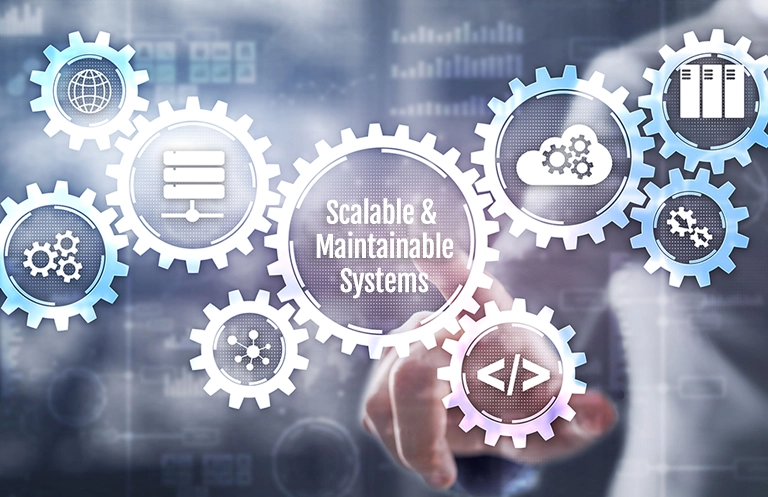Adopting best practices for scalable and maintainable systems is crucial for the long-term success and sustainability of software applications. These practices lay a solid foundation that allows applications to evolve alongside changing business requirements, technological advancements, and user expectations. By implementing scalable architectures, organizations can ensure that their systems handle increasing loads seamlessly, avoiding performance bottlenecks and service interruptions. Moreover, maintainable systems enable development teams to implement updates and new features more efficiently, which is essential in today’s fast-paced digital environment where agility is key.
Additionally, following best practices enhances code quality and consistency, reducing the likelihood of bugs and vulnerabilities. This not only improves user satisfaction through a more reliable product but also instills confidence among stakeholders regarding the robustness and security of the application. Furthermore, scalable, and maintainable systems facilitate easier onboarding of new developers, promote collaboration through standardized processes, and help manage technical debt effectively, ensuring that future development is both efficient and cost-effective. Embracing these best practices not only supports immediate operational needs but also positions organizations for sustained growth and innovation in the long term. By prioritizing scalability and maintainability, businesses can foster a resilient technological ecosystem that can adapt to emerging challenges and capitalize on new opportunities.
1. Scalability:
- Meet Growing Demand: As user bases grow or as applications become more popular, scalability ensures that systems can handle the increased traffic and workload without sacrificing performance or reliability.
- Cost Efficiency: Scalable systems allow organizations to optimize resource usage and avoid over-provisioning, leading to cost savings in terms of infrastructure and operational expenses.
- Business Agility: Scalable systems enable businesses to respond quickly to changing market demands and opportunities, facilitating innovation and competitive advantage.
2.Maintainability:
- Reduce Technical Debt: Following best practices for maintainability helps reduce technical debt by ensuring that codebases are clean, modular, and well-documented, making it easier to understand and maintain over time.
- Faster Development Cycles: Maintainable systems are easier to modify and extend, allowing developers to implement new features, fix bugs, and address user feedback more efficiently.
- Enhanced Collaboration: Well-maintained codebases foster collaboration among development teams by providing clear structure, standardized conventions, and documentation, leading to smoother integration and coordination.
3. Reliability:
- Minimize Downtime: Scalable and maintainable systems are inherently more reliable, with built-in mechanisms for fault tolerance, redundancy, and graceful degradation, reducing the likelihood and impact of downtime.
- Improved Quality: Following best practices for scalability and maintainability promotes quality assurance processes such as automated testing, continuous integration, and deployment pipelines, resulting in higher-quality software with fewer defects.
- Customer Satisfaction: Reliable systems lead to better user experiences, increased customer satisfaction, and loyalty, as users can depend on the application to perform consistently and predictably.
4. Performance:
- Optimized Performance: Scalable and maintainable systems are designed with performance in mind, leveraging techniques such as caching, load balancing, and optimization to deliver fast response times and efficient resource utilization.
- Scale Responsively: Scalable systems can dynamically adjust resources based on demand, ensuring optimal performance even during peak usage periods or sudden traffic spikes.
- Positive Reputation: High-performance systems contribute to a positive reputation for the organization, attracting more users and customers and enhancing the overall brand image.
5. Adaptability:
- Futureproofing: Scalable and maintainable systems are adaptable to future changes in technology, business requirements, and user needs, allowing organizations to evolve and innovate without being constrained by legacy architectures or technical debt.
- Flexibility: Following best practices enables systems to be more flexible and modular, making it easier to integrate the latest technologies, services, and functionalities as the organization grows and evolves.
- Market Advantage: Organizations with scalable and maintainable systems are better positioned to seize opportunities, respond to market trends, and stay ahead of competitors, driving business growth and success.
Adopting best practices for scalable and maintainable systems is essential for achieving business objectives, ensuring long-term viability, and delivering value to users and stakeholders. By investing in scalability, maintainability, reliability, performance, and adaptability, organizations can build resilient, high-quality software applications that meet the needs of today and tomorrow.













